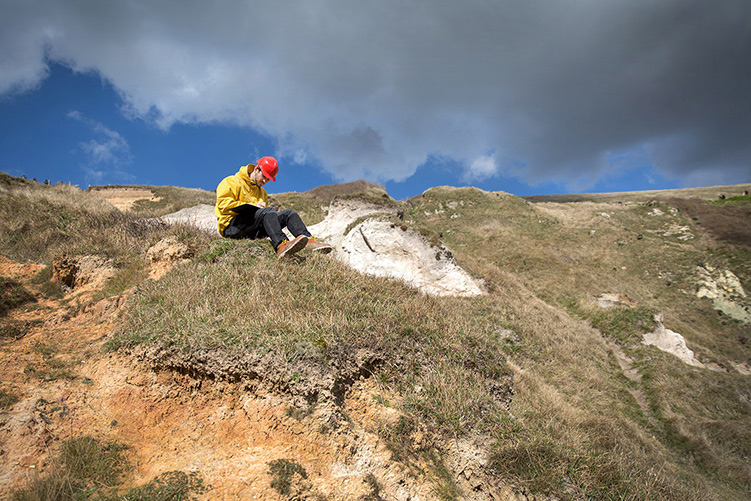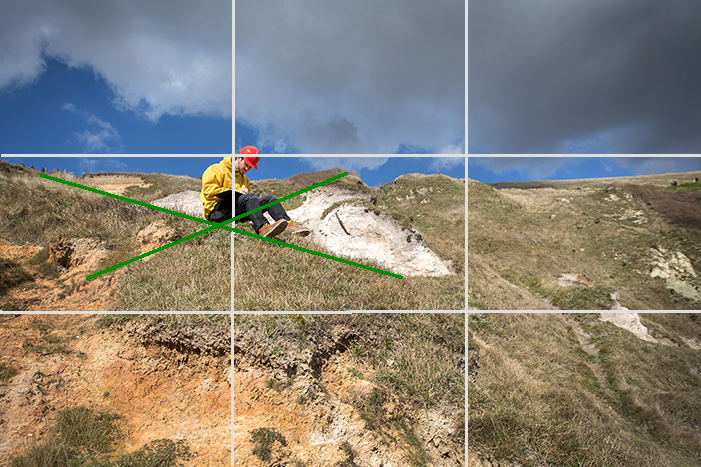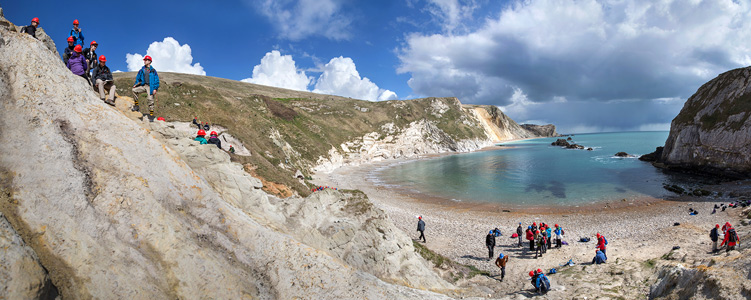When Geology and Geometry combine, the rule of thirds.
An undergraduate geologist from the Department of Earth Science and Engineering makes field notes on a field trip to the Jurassic Coast in Dorset.
 Image © Thomas Angus / Imperial College London [Click Image to expand]
Image © Thomas Angus / Imperial College London [Click Image to expand]
The cloud overhead, the sun and the clear blue sky give a clue to the bizarre day this was. It was hot, cold, windy, raining and hailing all in the same morning, but active colourful and contrasting skies make for great images.
There are a few things going on here to make this image work. First of all, the eye will always lurch first to any red in an image (and yellows to a certain degree). Classical painters often used this to great effect to guide the eye, as do contemporary advertisers. This undergraduate student’s hard hat is just the right portion of red. The eye knows where to look.
The student’s hat is also positioned almost exactly in the top third intersection of the image according to the rule of thirds. There are also physical leading lines to the same location, so it’s almost impossible to look around the image without first looking at the student taking notes.

Below is a wider establishing shot from the morning with Imperial students taking over the bay, this image was printed at 3 metres across and can now be seen hung in the Department of Earth Science and Engineering.

Find out more about the Rule of Thirds
Watch a short video exploring ‘the rule of thirds’ in photography on Lynda.com (College users have free access to Lynda courses)
Read an article here on Wikipedia about how the colour red attracts attention